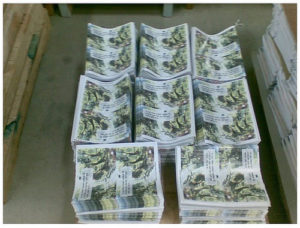I am interested in self-publishing comic books and children’s books. Do you guys have any upcoming training or seminars on how to do this? Or better yet on how to set up my own publishing studio? Thank you and more power.
–Ricardo Blanc
__
Hi Ricardo!
Sorry, the SERDEF has yet to include self-publishing as self-employment in its catalogue of training programs. But you are giving us ideas.
However, you may wish to get in touch with self-publishing resources in the Philippines.
As you may know, with the information you may have already taken the initiative to gather for yourself, self-publishing may take various forms.
The more common form of self-publishing is where authors undertake the entire cost of publication themselves and handle all editing, cover design, artwork and layout, photography, formatting, copyright and ISBN registration, printing, marketing, promotion, distribution. In other words – all the works.
If the author is willing to contract out to a printing press for his printing requirements, all rights remain with him, the books are his property, and he receives all the proceeds from sales.
This option may be tedious, expensive and risk-fraught for the self-published author. If he decides to consign his books to bookstores (and new authors will have to take or leave the consignment terms), he will have to do the requisite monitoring of the sales himself on a regular basis. National Bookstore, for example, has more than a hundred branch stories all over the country. Do you see yourself able to do that? … hop from branch to branch, some of which are located in farflung provinces.
Some authors don’t sell through conventional bookstores and instead put up virtual bookstores online (e.g. on Facebook, Multiplier, their own personal blog sites, etc.). They may arrange for various payment and delivery schemes (courier service, postal mail, use of drop-out points, etc.). Payment may be by bank transfer, credit card, money order, check, or cash when drop-out points are used and face-to-face meeting between the author and the book buyer takes place.
There is another option for you – the print-on-demand mode (POD) otherwise known as short-run printing. This technology is being used to print initial orders for a new book until marketplace demand can be ascertained and an offset print run can be more efficiently sized.
POD publishers generally do not screen submissions prior to publication, and many are web-based. They accept uploaded digital content as Microsoft Word documents, text files, HTML or RTF files, as printing services for anyone who is willing to pay.] Authors choose from a selection of packages, or design a unique printing package that meets their requirements. For an additional cost, a POD publisher may offer services such as book jacket design with professional art direction; content, line, and copy-editing; indexing; proofreading; and marketing and publicity. Some POD publishers offer publication as e-books in addition to hardcover and paperback. Some POD publishers will offer ISBN (International Standard Book Numbers) service, which allows a title to be searchable and listed for sale on websites.
In the Philippines, one well-known PDO company is Central Books Supply which pioneered in on-demand production of books in the country. Its website asserts they are the first and only complete digital book factory in the country today. It produces over 4 million book impressions per month with an overall capacity of over 8 million impressions per month,.
CentralBooks further claim it has generated amazing results for both their authors and customers. “Books are never out of print and are in our bookstores in a matter of days rather than months.”
I personally know two authors who used CentralBooks to print their work on demand. One published a reference book on Accounting for Non-Accountants, while the other published a short novel. Both testify to good results.
On the copyright page of his book, the latter wrote a glowing testimonial for the service provided by CentralBooks: “They are efficient workers and should be praised for giving fledgling writers and artists an economically viable way to party in the Philippine Print Paradigm. Behold this book, what big things one can do with so little money. As everyone knows but is still afraid to admit: the future of Philippine literature is in the Small Independent Press, be it physical or ethereal.”
If you’re interested in having your work published as an e-book, you might wish to approach Vibal Printing’s Vee Press.
Of course, promoting your books is another matter. How do you get the target readers to know your book exists and how they may obtain copies? Word of mouth works, though in a limited way. Your blogs and social media announcements (FB, twitter, plurk) would help, too, as would asking your friends to help spread the word around through their own FB pages and the like. You may also wish to submit copies of your book to editors and writers of relevant newspapers and magazines: if they like your work, chances are they would review it or at least “plug” it.
I hope you can pick up something useful from this reply.
By the way, here are contact numbers of CentralBooks:
927 Phoenix Building, Quezon Avenue, QC
Tel. 372 3550, 374 4064
Email: [email protected]
Photo: “Pratham Books at Manipal Press” by Pratham Books, c/o Flickr. Some Rights Reserved

